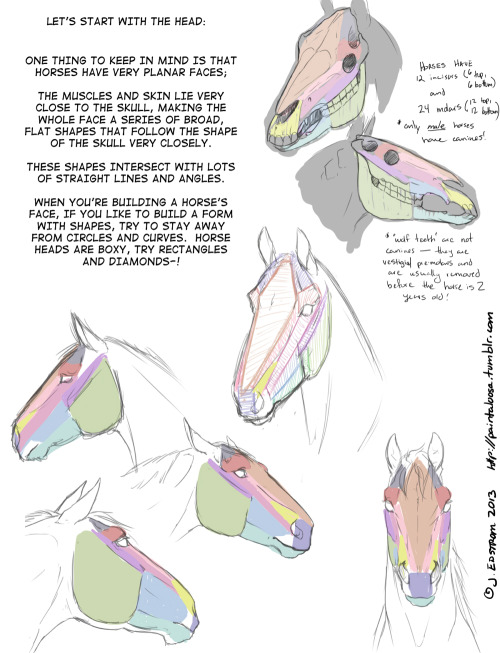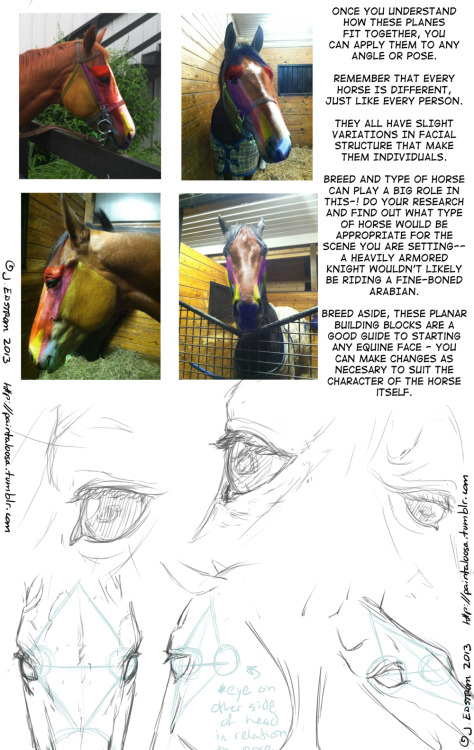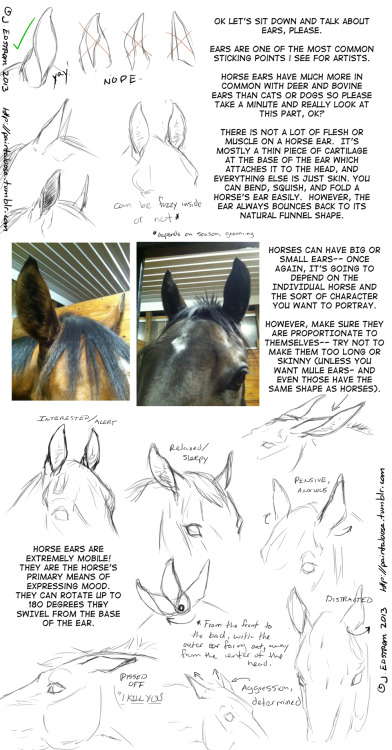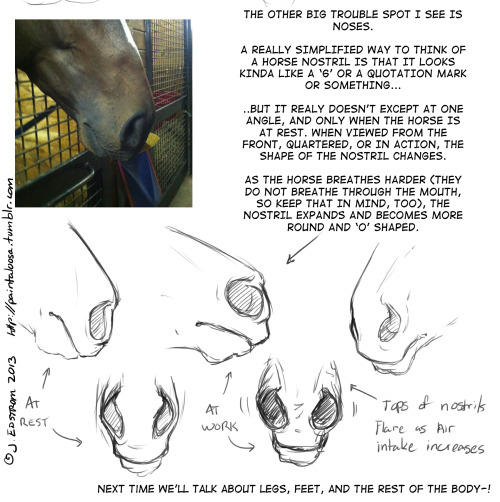paintaloosa: All right, here’s my contribution to the art tutorial infographic world, part 1 o
paintaloosa: All right, here’s my contribution to the art tutorial infographic world, part 1 of 2. I’ve noticed that even in professional illustration, so often the humans and environments and armor and whatnot is really, really great— correct anatomy, lighting, proportions, like ‘wow this is fantastic WAIT what is up with that HORSE?’ I suspect two things; First is that I spend 15 hours a day, 365 days a year looking, touching, handling, and just generally being around horses. Second is that most people do not. Artists have lost touch with their connection to horses as contemporary society has lost touch with them. Generally, we don’t have that constant presence of horses in our lives that previous generations did, as horses aren’t part of the everyday landscape any more. They don’t work the fields, they don’t cart the goods, they don’t deliver the mail or transport you to the next town down the road. However, we still see horses all the time— in movies, books, illustration, ads and logos, we are presented with the image of horses all the time. So we assume ‘yes, I have seen horses often and I know what they look like.’ Because of our exposure, we as artists don’t always feel like we need to heavily reference the animals as if we were drawing something we don’t see everyday (say, like elephants or giraffes or sea cucumbers). Our brain just kind of plugs in ‘horse shaped’ and we go with that. And I suspect that ends up being where a lot of these common mistakes occur. Dogs are familiar, but we can easily find a dog to draw from live, to see the way the shapes of its face are put together in 3-dimensions. Cats, humans, birds… if we venture just a little ways outside our studios (or in some cases, inside), we can find live models to study easily. You can’t really do that with horses. They’re a commodity, sequestered away behind fences on private farms and shuttered away in barns. So few people really get the chance to be up close and have that hands-on experience to really learn how a horse is put together. So here’s some things, based on my own experience both drawing and working with horses, that might help you if you find yourself needing to draw one for yourself. The approach I took might be more complicated than absolutely necessary, but I tried to present the subject of ‘how to draw horses’ a little differently than I’ve seen it done before. I hope someone finds it understandable, and more importantly, helpful! If you share this, please don’t delete my commentary about it above. Thanks :3 -- source link
Tumblr Blog : spookaloosa.tumblr.com





